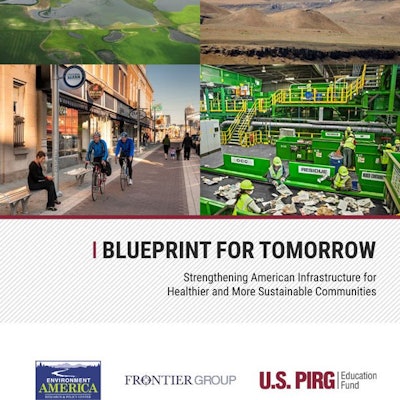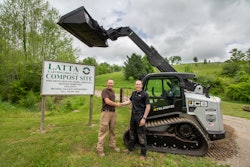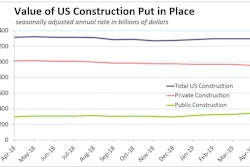
A new white paper, “Blueprint for Tomorrow: Strengthening American Infrastructure for Healthier and More Sustainable Communities”, written by Frontier Group’s R.J. Cross along with its partners at U.S. PIRG Education Fund and Environment America Research & Policy Center, sketches out a vision for U.S. infrastructure that starts with a new approach focusing not on how much should be spent but rather what needs to be built and why. It highlights five priority areas: energy, water, transportation, solid waste and “natural infrastructure,” including forests, wetlands and other natural areas.
The white paper is co-authored by John Rumpler, Rob Sargent and Steve Blackledge Environment America Research & Policy Center; Abe Scarr, Matt Casale and Alex Truelove, U.S. PIRG Education Fund; Andre Delattre, The Public Interest Network. It states that “it is time for a bold, new vision for federal infrastructure policy – one that focuses attention on the 21st century’s toughest challenges, from ensuring safe drinking water for all Americans to addressing global warming…”
According to the authors, the Trump administration and Congress have the opportunity to leave a lasting legacy by focusing federal policy on "unleashing high-value investments in critical areas." It proposes a new approach to federal infrastructure investment policy based on four common-sense principles:
Principle 1: Focus infrastructure investment on what matters.
“By prioritizing infrastructure investment to achieve important goals in five main areas – clean energy, clean water, solid waste and recycling, natural infrastructure and transportation – decision-makers can lay a solid foundation for the health and prosperity of the nation.”
Principle 2: Fix it first.
“To maximize the value of the taxpayer dollars that went towards the initial construction of infrastructure, the nation’s infrastructure vision should prioritize repair and rehabilitation of useful infrastructure that already exists over the creation of new infrastructure, where cost-effective and appropriate.”
Principle 3: Don’t invest in infrastructure that will need to be abandoned before the end of its useful life.
“We should not invest or allow the construction of fossil fuel infrastructure that will need to be abandoned as the nation transitions to cleaner forms of energy to address climate change, and all new infrastructure should be built with the climate of the future in mind. The same principles apply for other foreseeable changes (such as emerging technologies) that threaten to make infrastructure investments obsolete.”
Principle 4: Get the most out of our infrastructure.
“Building the biggest, most expensive infrastructure is not always the best approach available to meeting a community’s needs. Using our existing infrastructure more efficiently can often reduce the amount we need to spend, with similar benefits.”
Click here to read the full Executive Summary of the white paper’s findings, or click here to download the complete white paper.
Related Content
Five Legislative Challenges Asphalt Contractors Face in 2019
TRIP Report Finds 15% of Rural Roadways Need Immediate Attention
ARTBA Leader Program Fellows Push Congress for Highway Trust Fund Fix



















